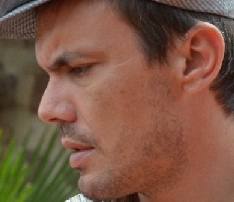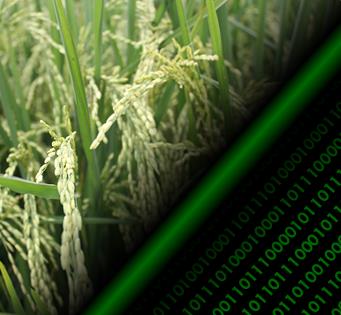Fungal infections of rice, wheat and grape in Europe in 2030-2050.
 |
2013 - Agronomy for Sustainable Development, 33, 767-776 |
 |
Bregaglio, S., Donatelli, M., Confalonieri, R. |
Abstract:
Although models to predict climate impact on crop production have been used since the 1980s, spatial and temporal diffusion of plant diseases are poorly known. This lack of knowledge is due to few models of plant epidemics, high biophysical complexity, and difficulty to couple disease
models to crop simulators. The first step is the evaluation of disease potential growth in response to climate drivers only. Here, we estimated the evolution of potential infection events of fungal pathogens of wheat, rice, and grape in Europe. A generic process-based infection model driven by air temperature and leaf wetness data was parameterized with the thermal and moisture requirements of the pathogens. The model was
run on current climate as baseline, and on two time frames centered on 2030 and 2050. Our results show an overall increase in the number of infection events, with differences among the pathogens, and showing complex geographical patterns. For wheat, Puccinia recondita, or brown rust, is forecasted to increase +20–100 % its pressure on the crop. Puccinia striiformis, or yellow rust, will increase 5–20 % in the cold areas. Rice pathogens Pyricularia oryzae, or blast disease, and Bipolaris oryzae, or brown spot, will be favored in all European rice districts, with the most critical situation in Northern Italy (+100 %). For grape, Plasmopara viticola, or downy mildew, will increase +5–20 % throughout Europe. Whereas Botrytis cinerea, or bunch rot, will have heterogeneous impacts ranging from −20 to +100 % infection events. Our findings represents the first attempt to provide extensive estimates on disease pressure on crops under climate change, providing information on possible future challenges European farmers will face with in the coming years.
models to crop simulators. The first step is the evaluation of disease potential growth in response to climate drivers only. Here, we estimated the evolution of potential infection events of fungal pathogens of wheat, rice, and grape in Europe. A generic process-based infection model driven by air temperature and leaf wetness data was parameterized with the thermal and moisture requirements of the pathogens. The model was
run on current climate as baseline, and on two time frames centered on 2030 and 2050. Our results show an overall increase in the number of infection events, with differences among the pathogens, and showing complex geographical patterns. For wheat, Puccinia recondita, or brown rust, is forecasted to increase +20–100 % its pressure on the crop. Puccinia striiformis, or yellow rust, will increase 5–20 % in the cold areas. Rice pathogens Pyricularia oryzae, or blast disease, and Bipolaris oryzae, or brown spot, will be favored in all European rice districts, with the most critical situation in Northern Italy (+100 %). For grape, Plasmopara viticola, or downy mildew, will increase +5–20 % throughout Europe. Whereas Botrytis cinerea, or bunch rot, will have heterogeneous impacts ranging from −20 to +100 % infection events. Our findings represents the first attempt to provide extensive estimates on disease pressure on crops under climate change, providing information on possible future challenges European farmers will face with in the coming years.
 |
Keywords: Infection process, plant fungal diseases, potential infection, process-based models, spatialized simulation, SRES scenarios |
 |
DOI: 10.1007/s13593-013-0149-6 |
- Comparison of three calibration methods for modeling rice phenology
- A simple pipeline for the assessment of legacy soil datasets: An example and test with soil organic carbon from a highly variable area.
- A high-resolution, integrated system for rice yield forecasting at district level.
- Downscaling rice yield simulation at sub-field scale using remotely sensed LAI data.
- Analysis and modelling of processes involved with salt tolerance and rice.
- Estimating crop nutritional status using smart apps to support nitrogen fertilization. A case study on paddy rice.
- Development of generic crop models for simulation of multi-species plant communities in mown grasslands.
- Quantifying uncertainty due to stochastic weather generators in climate change impact studies
- Predicting rice blast disease: machine learning versus process-based models
- Boundaries and perspectives from a multi-model study on rice grain quality in Northern Italy.




